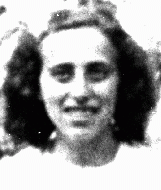
Bruna Sevini
Born: September 22, 1923
Trieste, Italy
Bruna was the oldest of two children born to Italian-speaking Jewish parents who had settled in the cosmopolitan city of Trieste. Her father, born in Vienna, served in the Austro-Hungarian army during World War I. He became a naturalized Italian during the 1920s after marrying Bruna's mother. Growing up in fascist Italy, Bruna attended public schools in Trieste and felt proud to be an Italian.
1933-39: In September 1938 Bruna was surprised to see anti-Jewish graffiti. Then anti-Jewish race laws were announced. She was expelled from her public secondary school and her father was fired from his job. Circumstances forced Bruna into a new, private Jewish school organized by fired Jewish professors, with small classes and excellent teachers. Ironically, her exams and diploma were fully accredited by the Italian state.
1940-44: Bruna and her family were glad when Mussolini fell from power in July 1943, but his fall led to the German occupation of Italy. They fled south but were caught in a roundup. Awaiting deportation to Germany, Bruna attended a Christmas Mass in their prison. The Bishop of Rimini told her not to despair and to believe in miracles. Three days later the prison was hit during an air raid. They escaped to a convent south of Rimini and discovered that the bishop had instructed the convent to give shelter to refugees with no questions or payment asked.
Bruna was liberated at the convent by British troops on September 23, 1944, the day after her twenty-first birthday.